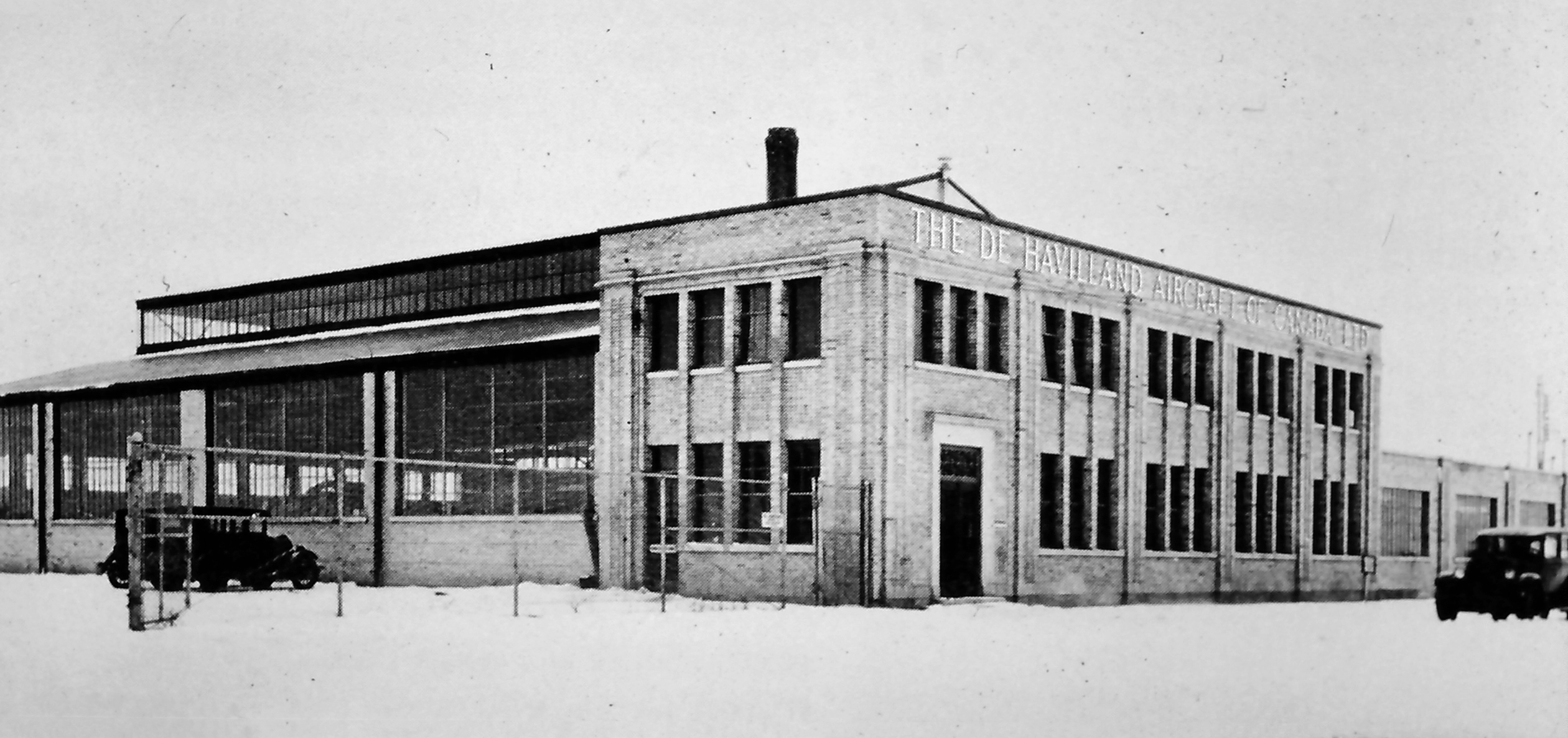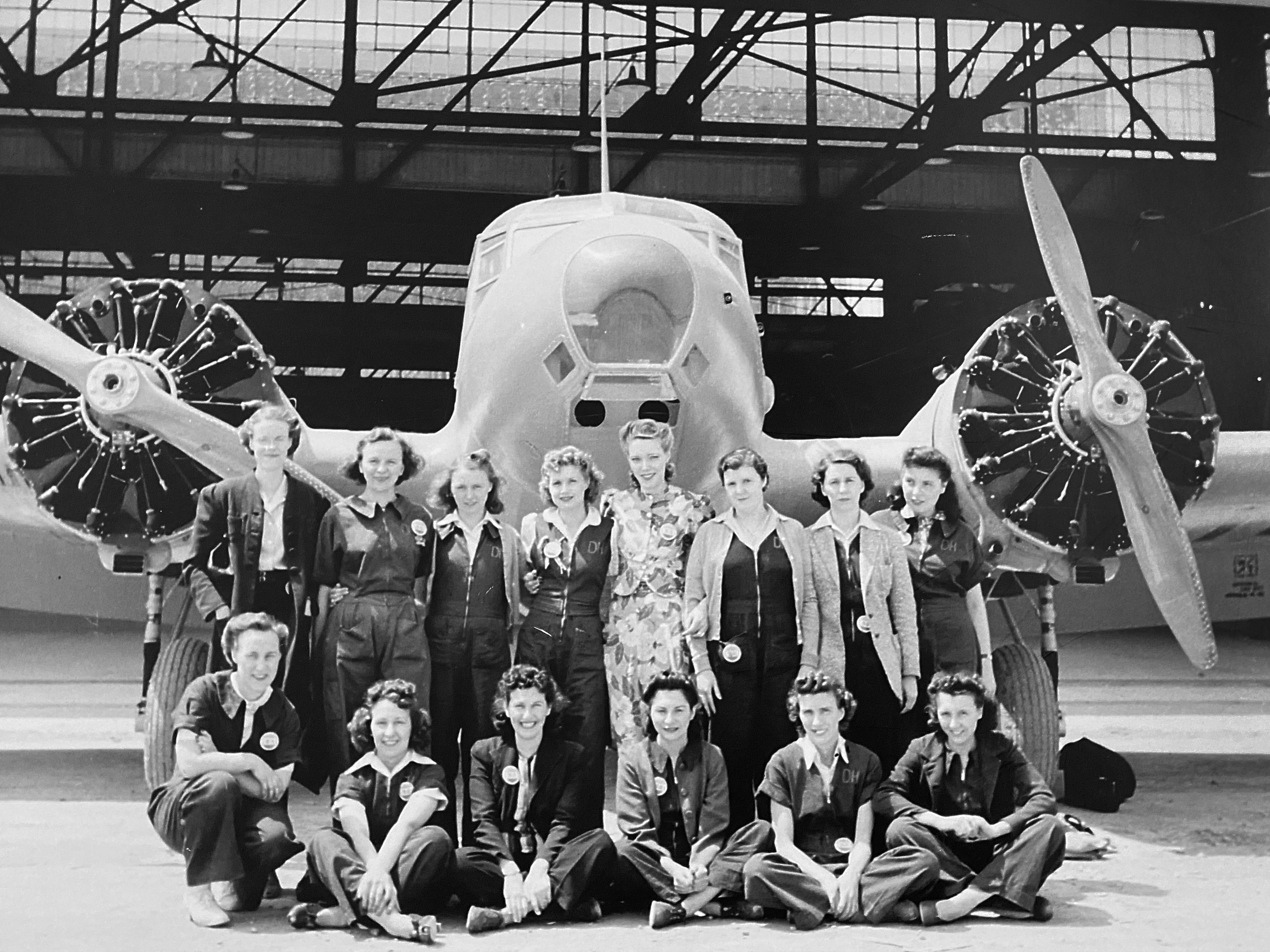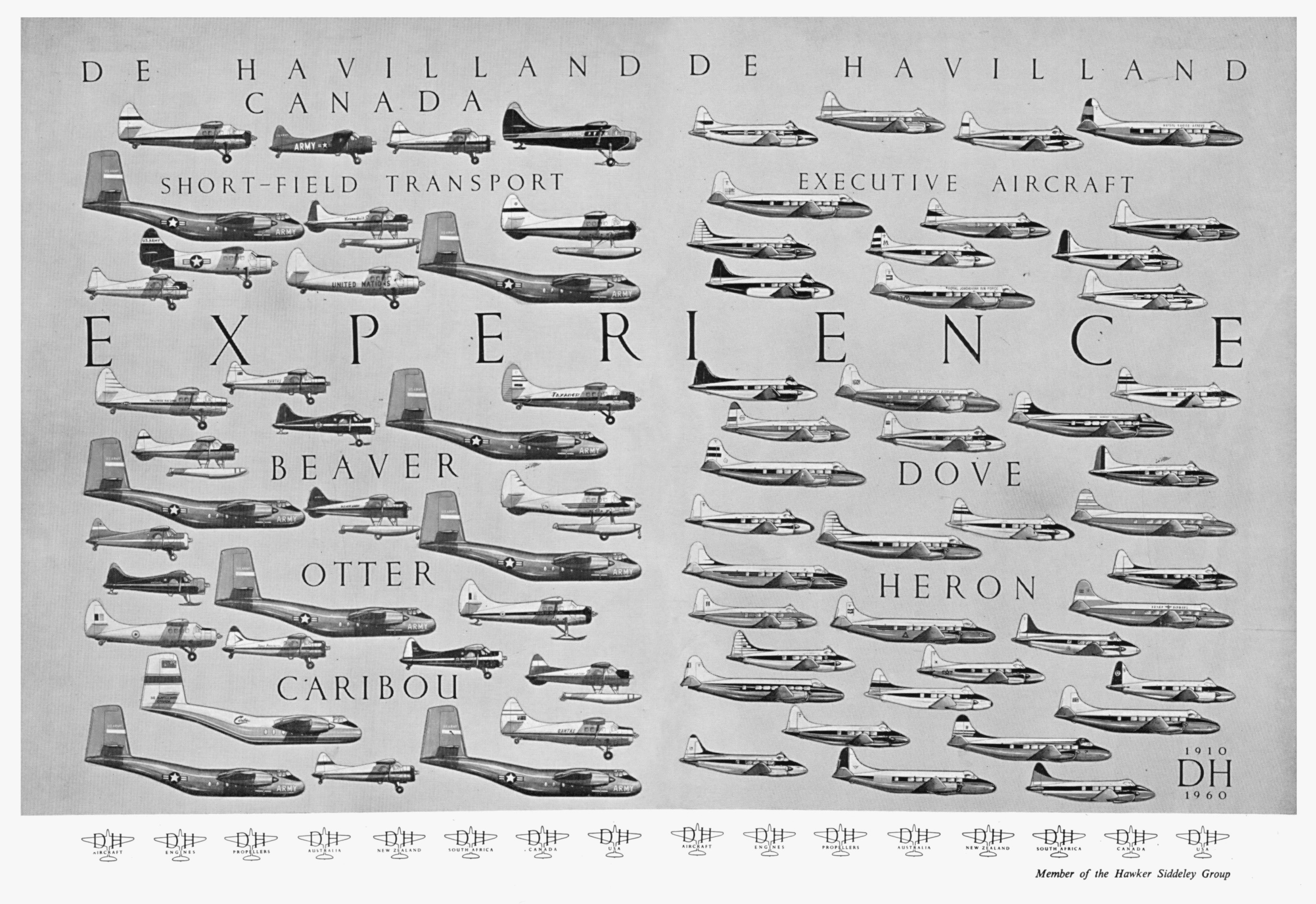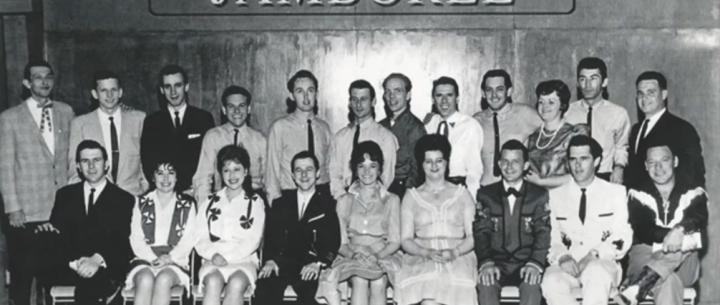Starting in the late 1920s, land in the Downsview area was being used for airfields—Barker Field, the Canadian Express Airport and the Toronto Flying Club. In April 1929, the de Havilland Airfield was built after de Havilland Aircraft of Canada purchased 70 acres of farmland along Sheppard Avenue West. They began with a staff of 35 in a 20,000-square-foot plant next to the railway (now repurposed as Centennial College Bombardier Centre for Aerospace and Aviation at 65 Carl Hall Road). De Havilland Aircraft was a pioneer in Canadian aviation. De Havilland Aircraft of Canada began operations in Downsview in April 1929.

With the onset of World War II, de Havilland manufactured aircraft for the Royal Canadian Air Forces (RCAF) and British Commonwealth Air Training Plan and provided employment for workers (men and women) which helped sustain the local economy. Unable to meet the demands of wartime production, de Havilland acquired more land beside their plant to build additional facilities.

Between 1936 and 1938, de Havilland added a paint shop, hangar, and a main building south of the original plant (now the Downsview Park Sports Centre at 75 Carl Hall Road). De Havilland grew to employ 2,400 employees. In 1942 alone, they produced 362 Ansons, 550 Tiger Moths and developed the Mosquito fighter-bomber. De Havilland marked a number of firsts—and significant achievements in Canadian aviation history—at their plant in Downsview, including the celebrated Beaver and Mosquito.

| DHC-2 Beaver | 1947 | $21,000 |
| DHC-3 Otter | 1953 | $80,000 |
| DHC-4 Caribou | 1961 | $425,000 |
| DHC-5 Buffalo | 1965 | $1.55M |
| DHC-6 Twin Otter | 1966 | $248,000 |
| DHC-8 Dash 8 | 1984 | $4.35M |
| Bombardier Global 7500 | 2019 | $73M |
Shortly after the end of World War II, de Havilland resumed commercial operations. In the mid-1950s, in response to the onsite military expansion, de Havilland moved its operations to modern facilities in the southeast quadrant of the Downsview lands.

More Stories

Music in Downsview
Everyone knows that SARSStock, featuring the Rolling Stones, AC-DC, Rush and others, took place in Downsview. But few are aware that Downsview is also notable for once having Canada’s largest nightclub and an auditorium featuring Toronto’s biggest bands.

Sporting Traditions
Downsview is the home of a thriving sports and recreation scene, including the soccer facilities where Toronto FC practices, the BMO Training Ground.
